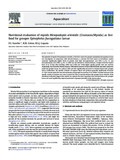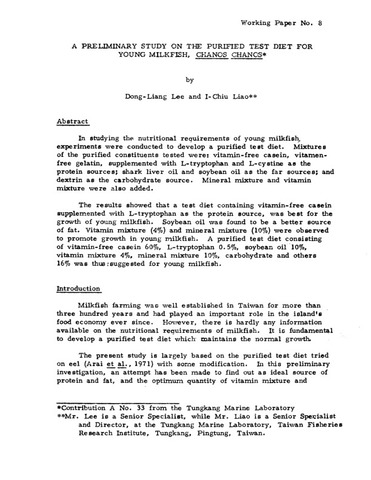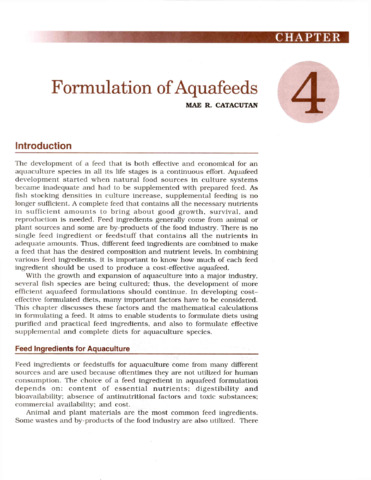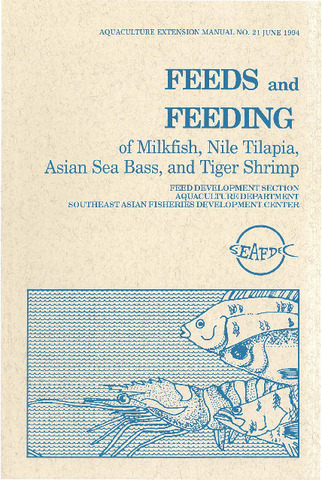Nutritional evaluation of mysids Mesopodopsis orientalis (Crustacea:Mysida) as live food for grouper Epinephelus fuscoguttatus larvae

View/
Request this document
Page views
157Metadata
Show full item recordCited times in Scopus
Share
Abstract
The potential of mysids Mesopodopsis orientalis as live food source for grouper Epinephelus fuscoguttatus larvae was investigated. In comparison with Artemia biomass, a common live food source in larviculture, mysids contained significantly higher levels of protein, total lipid, eicosapentaenoic acid (EPA, C20:5n−3), and docosahexaenoic acid (DHA, C22:6n−3). DHA was not detected in Artemia biomass. Grouper larvae fed mysids from 35 to 55 days after hatching (DAH) had 2-fold and 3-fold higher specific growth rates and survival, respectively, than those fed Artemia biomass. DHA levels increased 6-fold while EPA levels remained constant in mysid-fed grouper larvae. In contrast, DHA and EPA significantly decreased in Artemia biomass-fed grouper larvae. Furthermore, the specific activities of amylase, lipase and protease generally significantly increased (P< 0.05) in both mysid-fed and Artemia biomass-fed grouper larvae from 35 to 55DAH. A marked increase in the specific activity of amylase was seen in mysid-fed than in Artemia biomass-fed grouper larvae. Results of the nutritional evaluation suggest that mysids are superior live food organisms than Artemia biomass for grouper larvae and could significantly improve production of grouper juveniles in the nursery phase.
Suggested Citation
Eusebio, P. S., Coloso, R. M., & Gapasin, R. S. J. (). Nutritional evaluation of mysids Mesopodopsis orientalis (Crustacea:Mysida) as live food for grouper Epinephelus fuscoguttatus larvae. Aquaculture , 306(1-4), 289-294. https://doi.org/10.1016/j.aquaculture.2010.05.004
Subject
Taxonomic term
Collections
- AQD Journal Articles [1215]
Related items
Showing items related by title, author, creator and subject.
-
A preliminary study on the purified test diet for young milkfish, Chanos chanos
Lee, Dong-Liang; Liao, I-Chiu (Aquaculture Department, Southeast Asian Fisheries Development Center, 1976)In studying the nutritional requirements of young milkfish experiments were conducted to develop a purified test diet. Mixtures of the purified constituents tested were: vitamin-free casein, vitamin-free gelatin, supplemented ... -
Formulation of aquafeeds
Catacutan, Mae R. (Aquaculture Department, Southeast Asian Fisheries Development Center, 2002)The development of a feed that is both effective and economical for an aquaculture species in all its life stages is a continuous effort. Aquafeed development started when natural food sources in culture systems became ... -
Feeds and feeding of milkfish, Nile tilapia, Asian sea bass, and tiger shrimp
Feed Development Section (Aquaculture Department, Southeast Asian Fisheries Development Center, 1994)A 97-page manual that discusses the nutrient requirements, sources and characteristics of feedstuffs, feed formulation, practical feed formulation, processing and preparation, storage and quality control and feeding ...





